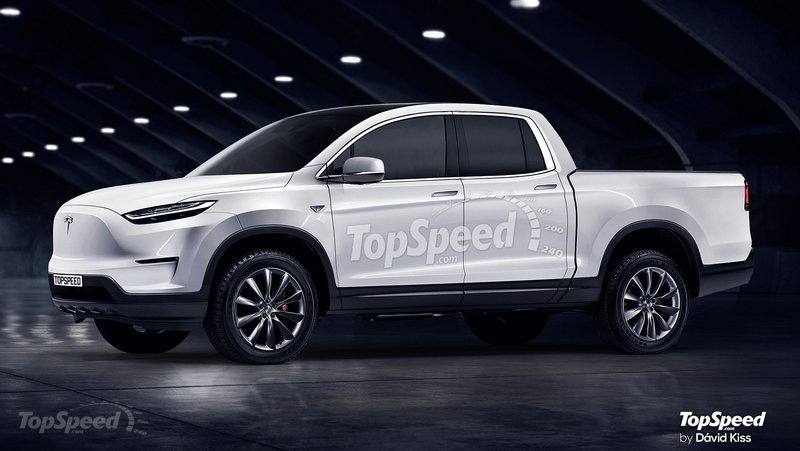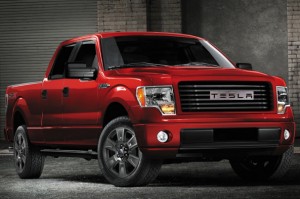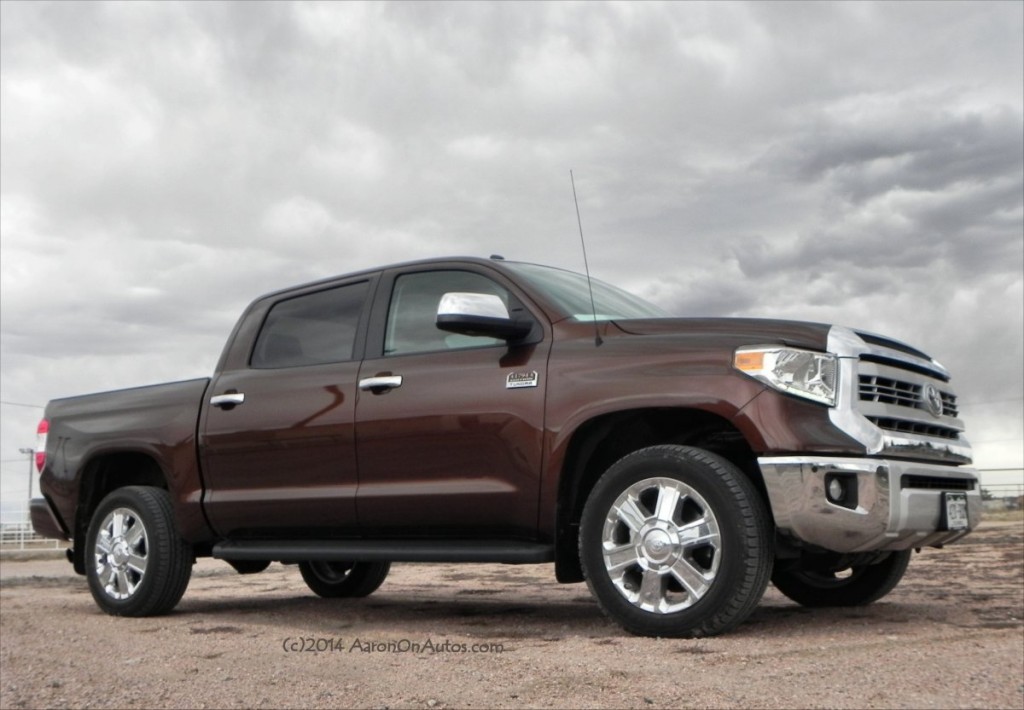News
The very real challenge of a Tesla Pickup Truck

Call it the Tesla Truck, the Tesla Pickup Truck, or the Tesla-150, but CEO Elon Musk has made it clear as revealed in the company’s Master Plan, Part Deux that the electric carmaker plans to make a pickup and heavy-duty truck. In fact, he couldn’t be clearer: he stated in the past that plans call for something to compete with the best-selling light-duty vehicle on American roads: the Ford F-150. This precludes the idea of a small or mid-sized Tesla truck and says that Musk seems to be clearly aiming for a full-sized offering.
 A full-sized electric truck seems like a lark to most truck owners and enthusiasts. I live in the heart of truck country, Wyoming, where pickup trucks equal passenger cars in numbers on the road and range from half-ton F-150s, 1500s, and Silverados to heavy-duty and diesel-driven duals. Although many enjoy scoffing at the wannabe cowboys who buy a big, shiny pickup and drive it to the office and back every day – never seeing dirt or any load larger than an IKEA furniture set – the core truck buyer and, indeed, the majority of truck owners do not fit that stereotype.
A full-sized electric truck seems like a lark to most truck owners and enthusiasts. I live in the heart of truck country, Wyoming, where pickup trucks equal passenger cars in numbers on the road and range from half-ton F-150s, 1500s, and Silverados to heavy-duty and diesel-driven duals. Although many enjoy scoffing at the wannabe cowboys who buy a big, shiny pickup and drive it to the office and back every day – never seeing dirt or any load larger than an IKEA furniture set – the core truck buyer and, indeed, the majority of truck owners do not fit that stereotype.
In general, truck owners fall into three categories: weekend warriors, offroaders, and workhorses. The weekend warrior uses a truck to tow toys (boats, RVs, what have you) and occasionally haul household construction goods for home improvement. The offroader buys the TRD, Pro-4X, and similar packages and spends a lot of time getting mud, dirt, and tree branches stuck on the truck (this would be my personal category, for the record). Finally, the workhorses are those who buy a truck to work with, either as a commercial vehicle or as a personal working machine – these include farmers, ranchers, commercial haulers, tradesmen, and so forth.
Traditionally, the largest truck market are the weekend warriors. These are the folks who buy a truck because they want to haul the family and their playthings around. They tow boats, jet skis, haul camping stuff, tote gear to the game, tailgate, and otherwise use their truck mostly as a recreational vehicle that may or may not be their everyday driver. Next to that market, and not as small as some might expect, are the workhorse buyers. These are the people who buy trucks to work with them and rely on them to get any of a number of jobs done. Most importantly to the industry, these are the repeat buyers – the ones who buy, trade-in and buy again (rinse, repeat). Where I live, for example, it’s not unusual for a rancher to buy a new truck every two or three years. Trading in a machine that will have over 100,000 miles on it is not unusual either. That’s 30,000-50,000 miles driven in only one year. For reference, as a commercial over-the-road driver, I put a little over 100,000 miles per year on my rig. Surveys of the truck market nationally show that in the traditional truck strongholds of the West, including Texas on up to the Dakotas and over to the coast, that kind of mileage is not unusual for the working pickup.
So let’s assume that Tesla plans to make a truck that will sell on the traditional pickup truck market in competition with the best-sellers from Ford, GM, and Ram. We can assume they won’t be doing a hard-core off-road package, but will aim for a 4×4 market in order to appeal to most truck buyers. Here’s a bullet list of criteria for a mainstream Tesla Truck offering, based on the most common features of a mainstream full-size pickup truck today:
- V8-like performance including roughly 400 hp and 380 lb-ft
- Extended and four-door cab offerings
- Cargo bed size of 5.5 feet with option for 7 feet
- Towing capacity of about 10,000 pounds
- Payload capacity of 1/2 ton to 3,000 pounds
- 4×4 capability
- Driving range, under load, of at least 150 miles
- Conventional styling and appeal
Those criteria make up the most common things truck buyers ask for. The recent revamp of the Toyota Tundra, for example, was mostly about style since the previous-generation Tundra was dated and didn’t look like a “beefy truck,” as one friend put it. This may be laughed at by the Teslarati, but it’s akin to the Model S having been designed to look like the Volkswagen Thing rather than the beautiful Euro-styled sedan it is. So don’t scoff.
Now that we have those basic requirements, let’s look at what Elon and Tesla would have to accomplish to make that happen.
For starters, the current powertrain in the Model S or Model X would not be sufficient. If put under load, towing a trailer for example, and with the aerodynamics of a pickup, the current powertrain would be lucky to achieve half the range required. Anyone who doubts this need only consider how much work went into Bob Lutz’ never-selling VIA truck and its plug-in hybrid powertrain, which together only produce marginal range when trailering at capacity. That’s an ICE (internal combustion engine) and electric drivetrain combined. Remember also that every pound of batteries added has a net-reduced benefit to the overall range of the vehicle as it also adds weight. Since Tesla isn’t currently using and hasn’t made a lot of noise about eventually using high-tech, high-density, bleeding-edge lithium batteries to lighten the battery’s weight, we can assume that the current Panasonic cells are what would power a Tesla Truck if it were made in the near future.
To tow a trailer at 7,000+ pounds would require an enormous amount of energy and to do so for a long range like truck owners would expect (e.g. to the lake and back) would be a feat. It’s not insurmountable, of course. There’s little doubt that Tesla’s engineers couldn’t overcome this obstacle, but it will be a huge one.
Matching V8-like performance would not be difficult – the Model S and Model X already does this and with the inherent strengths of an electric motor, namely torque from zero, the numbers actually required would be smaller than those needed for the gasoline equivalent.
Next comes another problem – off-road. With the problems the Model S has had in the past with undercarriage breaches on the highway, it’s easy to see concern when going fully off the road. Even the best of dirt roads are rough. Putting an under-pan, as Tesla has done may or may not work well with a truck. Skid plates are not unusual for trucks, of course, but they rarely run past the front engine compartment. Most of the safety is addressed by lifting components high up into the framing to minimize exposure. With a big, long, heavy battery pack, though, this is problematic. A skid plate may do the trick, but this would at the very least be a big marketing hassle for Tesla if nothing else.
Another big roadblock is going to be the price tag. In order to compete with the F-150 and its brethren, the Tesla Truck would need to sell at around the $30,000-$40,000 mark at entry-level. Truck buyers would probably be willing to pay a premium of $8,000, even $10,000 on the truck if the expected fuel savings are big and obvious. Yet even that premium markup is going to be a problem for Tesla because, well, unless of course the pickup will be based off the Model 3. This is where the Gigafactory could possibly pay off, but at this point, that is only an idea that is likely to become reality, but until it is, we have no idea how real its cost-savings in terms of dollars per kWh will be.
Finally, for sake of space, we have not even mentioned dealership woes. The top truck markets are well outside of Tesla’s best markets for the Model S and Model X. Some of those markets, such as Texas, are off limits to Tesla’s direct sales entirely. Yet if that’s overcome, there’s also marketing. Not only are pickup truck buyers exceedingly brand loyal (just ask Toyota and Nissan how easy it is to penetrate the full-sized market), but they’re finicky as well.
The conclusion? Tesla could likely, eventually, field a full-sized pickup truck capable of competing with the F-150, but the challenges are huge. Just as Elon likes ’em. Will they do it? Good question, but it’s fair to say that if they do, they may be treading on the thin crust of a deep, deep lake.
Feature image via Topspeed

Elon Musk
Elon Musk’s X will start using a Tesla-like software update strategy
The initiative seems designed to accelerate updates to the social media platform, while maintaining maximum transparency.

Elon Musk’s social media platform X will adopt a Tesla-esque approach to software updates for its algorithm.
The initiative seems designed to accelerate updates to the social media platform, while maintaining maximum transparency.
X’s updates to its updates
As per Musk in a post on X, the social media company will be making a new algorithm to determine what organic and advertising posts are recommended to users. These updates would then be repeated every four weeks.
“We will make the new 𝕏 algorithm, including all code used to determine what organic and advertising posts are recommended to users, open source in 7 days. This will be repeated every 4 weeks, with comprehensive developer notes, to help you understand what changed,” Musk wrote in his post.
The initiative somewhat mirrors Tesla’s over-the-air update model, where vehicle software is regularly refined and pushed to users with detailed release notes. This should allow users to better understand the details of X’s every update and foster a healthy feedback loop for the social media platform.
xAI and X
X, formerly Twitter, has been acquired by Elon Musk’s artificial intelligence startup, xAI last year. Since then, xAI has seen a rapid rise in valuation. Following the company’s the company’s upsized $20 billion Series E funding round, estimates now suggest that xAI is worth tens about $230 to $235 billion. That’s several times larger than Tesla when Elon Musk received his controversial 2018 CEO Performance Award.
As per xAI, the Series E funding round attracted a diverse group of investors, including Valor Equity Partners, Stepstone Group, Fidelity Management & Research Company, Qatar Investment Authority, MGX, and Baron Capital Group, among others. Strategic partners NVIDIA and Cisco Investments also continued support for building the world’s largest GPU clusters.
News
Tesla FSD Supervised wins MotorTrend’s Best Driver Assistance Award
The decision marks a notable reversal for the publication from prior years, with judges citing major real-world improvements that pushed Tesla’s latest FSD software ahead of every competing ADAS system.

Tesla’s Full Self-Driving (Supervised) system has been named the best driver-assistance technology on the market, earning top honors at the 2026 MotorTrend Best Tech Awards.
The decision marks a notable reversal for the publication from prior years, with judges citing major real-world improvements that pushed Tesla’s latest FSD software ahead of every competing ADAS system. And it wasn’t even close.
MotorTrend reverses course
MotorTrend awarded Tesla FSD (Supervised) its 2026 Best Tech Driver Assistance title after extensive testing of the latest v14 software. The publication acknowledged that it had previously criticized earlier versions of FSD for erratic behavior and near-miss incidents, ultimately favoring rivals such as GM’s Super Cruise in earlier evaluations.
According to MotorTrend, the newest iteration of FSD resolved many of those shortcomings. Testers said v14 showed far smoother behavior in complex urban scenarios, including unprotected left turns, traffic circles, emergency vehicles, and dense city streets. While the system still requires constant driver supervision, judges concluded that no other advanced driver-assistance system currently matches its breadth of capability.
Unlike rival systems that rely on combinations of cameras, radar, lidar, and mapped highways, Tesla’s FSD operates using a camera-only approach and is capable of driving on city streets, rural roads, and freeways. MotorTrend stated that pure utility, the ability to handle nearly all road types, ultimately separated FSD from competitors like Ford BlueCruise, GM Super Cruise, and BMW’s Highway Assistant.
High cost and high capability
MotorTrend also addressed FSD’s pricing, which remains significantly higher than rival systems. Tesla currently charges $8,000 for a one-time purchase or $99 per month for a subscription, compared with far lower upfront and subscription costs from other automakers. The publication noted that the premium is justified given FSD’s unmatched scope and continuous software evolution.
Safety remained a central focus of the evaluation. While testers reported collision-free operation over thousands of miles, they noted ongoing concerns around FSD’s configurable driving modes, including options that allow aggressive driving and speeds beyond posted limits. MotorTrend emphasized that, like all Level 2 systems, FSD still depends on a fully attentive human driver at all times.
Despite those caveats, the publication concluded that Tesla’s rapid software progress fundamentally reshaped the competitive landscape. For drivers seeking the most capable hands-on driver-assistance system available today, MotorTrend concluded Tesla FSD (Supervised) now stands alone at the top.
News
Elon Musk’s Grokipedia surges to 5.6M articles, almost 79% of English Wikipedia
The explosive growth marks a major milestone for the AI-powered online encyclopedia, which was launched by Elon Musk’s xAI just months ago.

Elon Musk’s Grokipedia has grown to an impressive 5,615,201 articles as of today, closing in on 79% of the English Wikipedia’s current total of 7,119,376 articles.
The explosive growth marks a major milestone for the AI-powered online encyclopedia, which was launched by Elon Musk’s xAI just months ago. Needless to say, it would only be a matter of time before Grokipedia exceeds English Wikipedia in sheer volume.
Grokipedia’s rapid growth
xAI’s vision for Grokipedia emphasizes neutrality, while Grok’s reasoning capabilities allow for fast drafting and fact-checking. When Elon Musk announced the initiative in late September 2025, he noted that Grokipedia would be an improvement to Wikipedia because it would be designed to avoid bias.
At the time, Musk noted that Grokipedia “is a necessary step towards the xAI goal of understanding the Universe.”
Grokipedia was launched in late October, and while xAI was careful to list it only as Version 0.1 at the time, the online encyclopedia immediately earned praise. Wikipedia co-founder Larry Sanger highlighted the project’s innovative approach, noting how it leverages AI to fill knowledge gaps and enable rapid updates. Netizens also observed how Grokipedia tends to present articles in a more objective manner compared to Wikipedia, which is edited by humans.
Elon Musk’s ambitious plans
With 5,615,201 total articles, Grokipedia has now grown to almost 79% of English Wikipedia’s article base. This is incredibly quick, though Grokipedia remains text-only for now. xAI, for its part, has now updated the online encyclopedia’s iteration to v0.2.
Elon Musk has shared bold ideas for Grokipedia, including sending a record of the entire knowledge base to space as part of xAI’s mission to preserve and expand human understanding. At some point, Musk stated that Grokipedia will be renamed to Encyclopedia Galactica, and it will be sent to the cosmos.
“When Grokipedia is good enough (long way to go), we will change the name to Encyclopedia Galactica. It will be an open source distillation of all knowledge, including audio, images and video. Join xAI to help build the sci-fi version of the Library of Alexandria!” Musk wrote, adding in a later post that “Copies will be etched in stone and sent to the Moon, Mars and beyond. This time, it will not be lost.”









